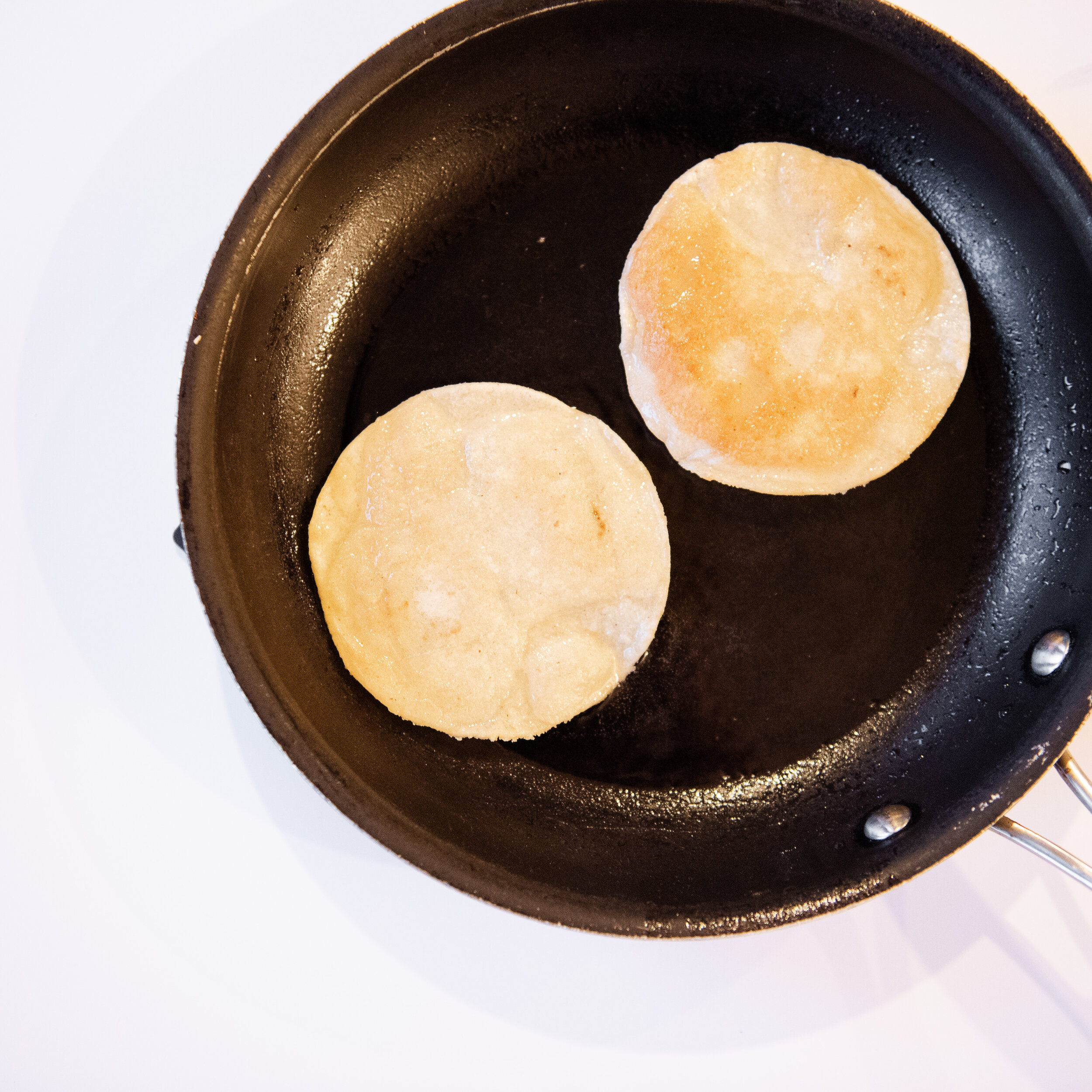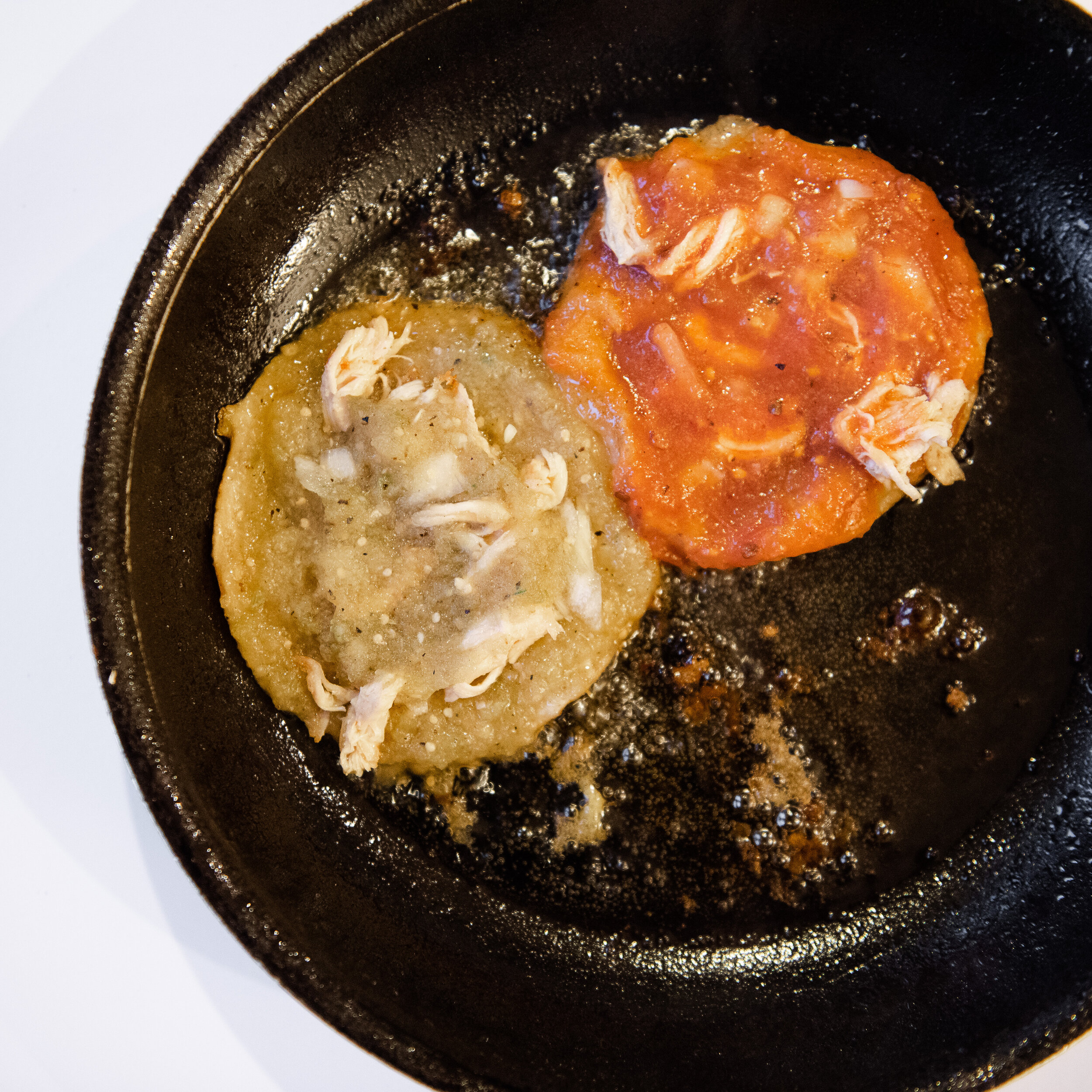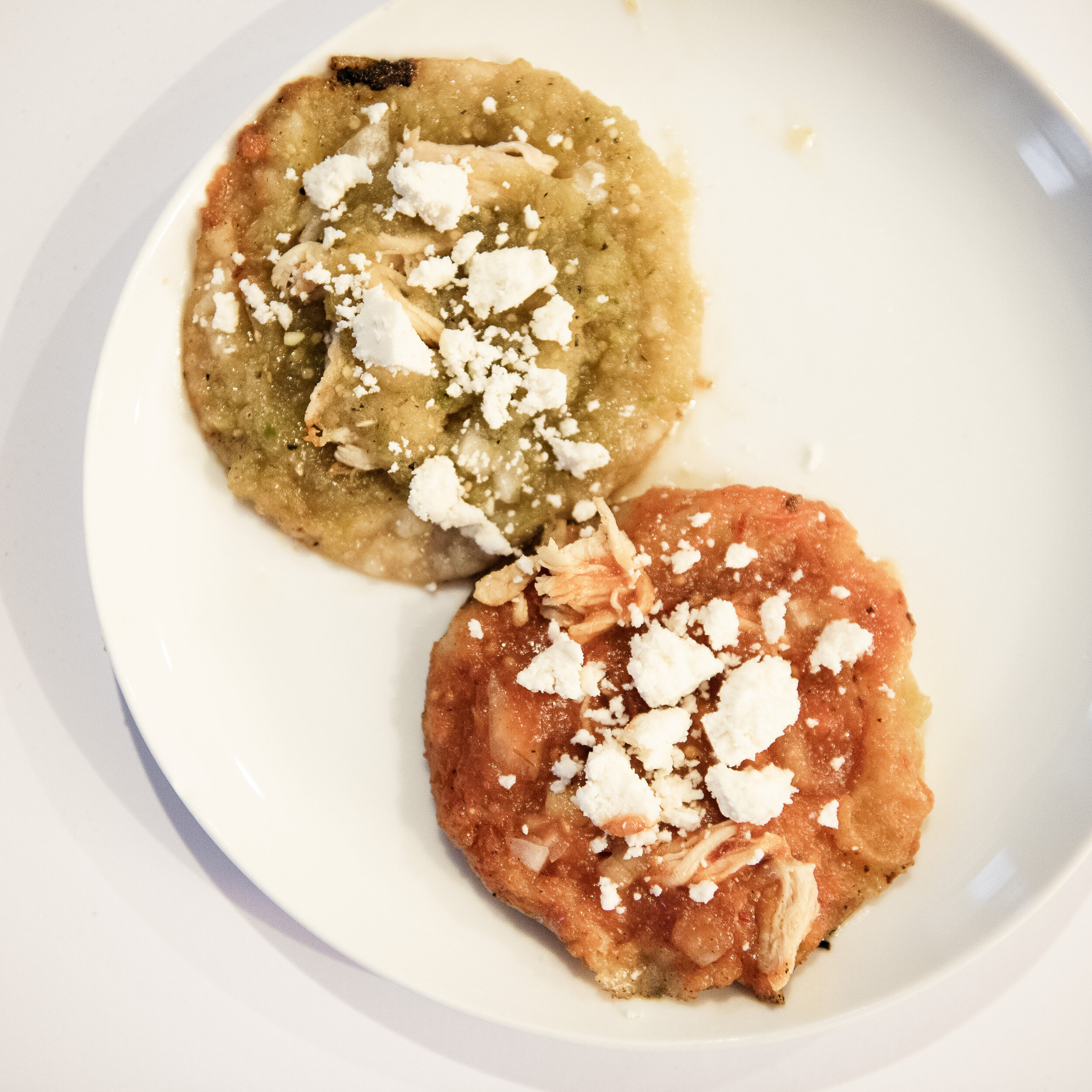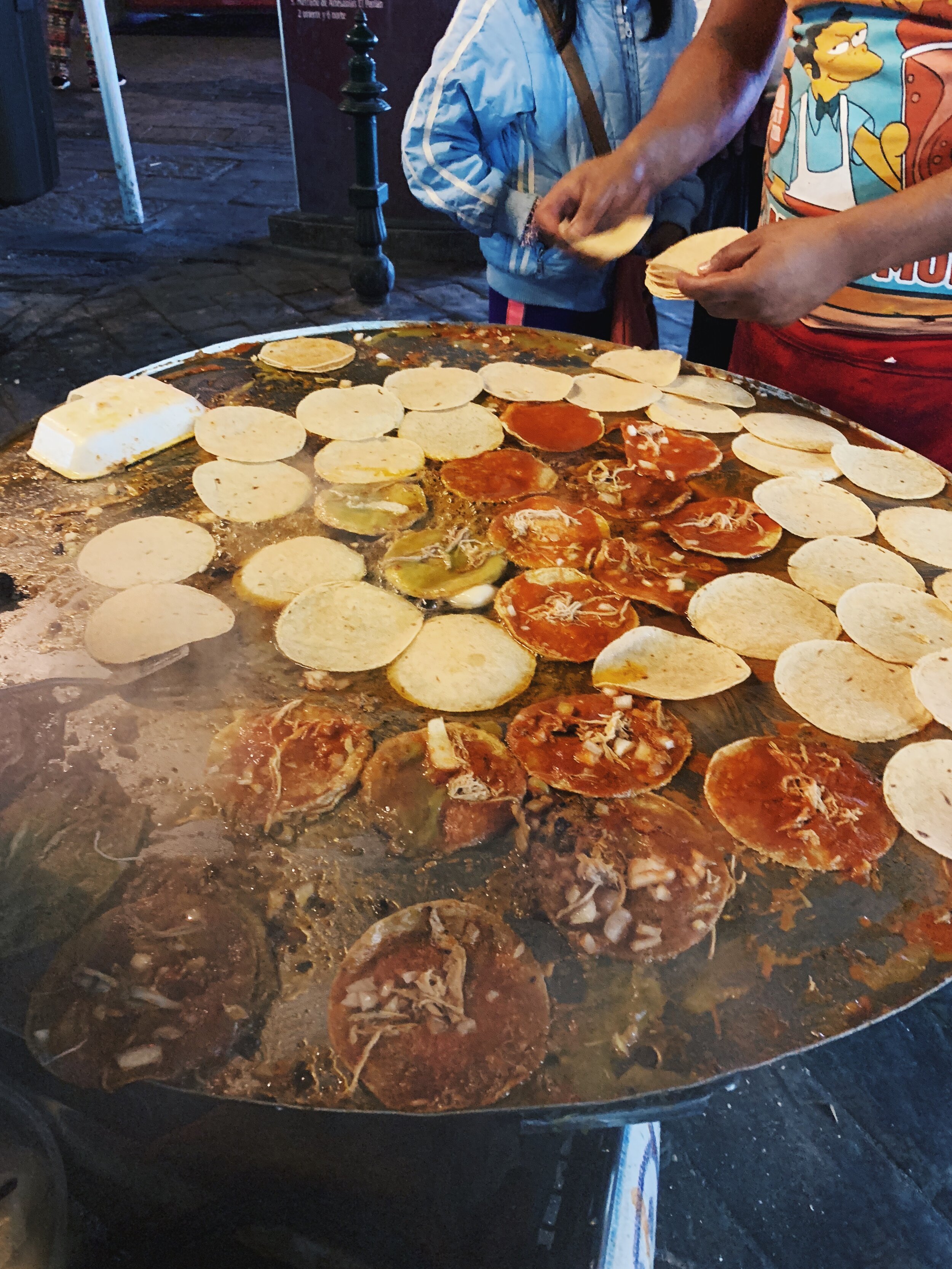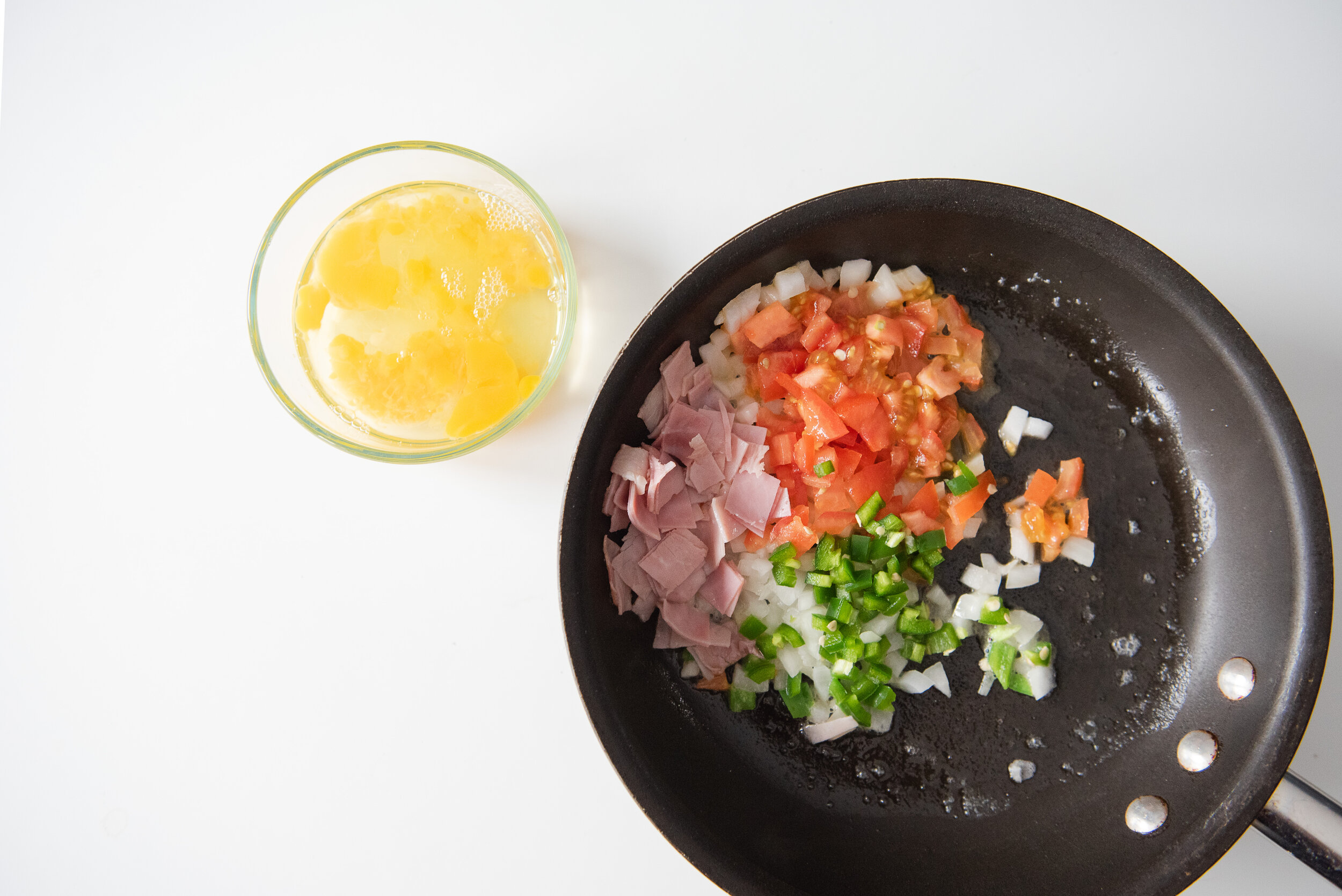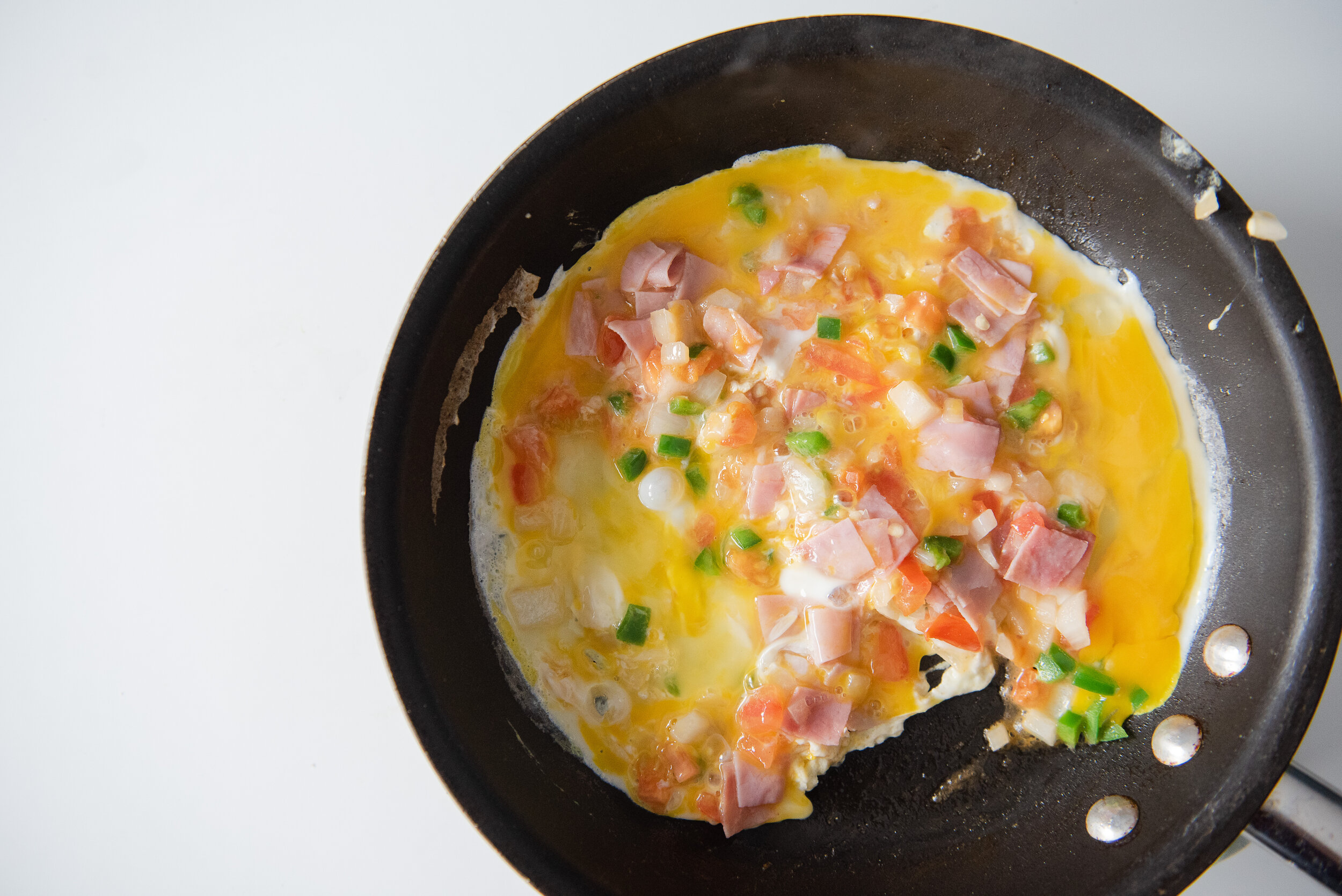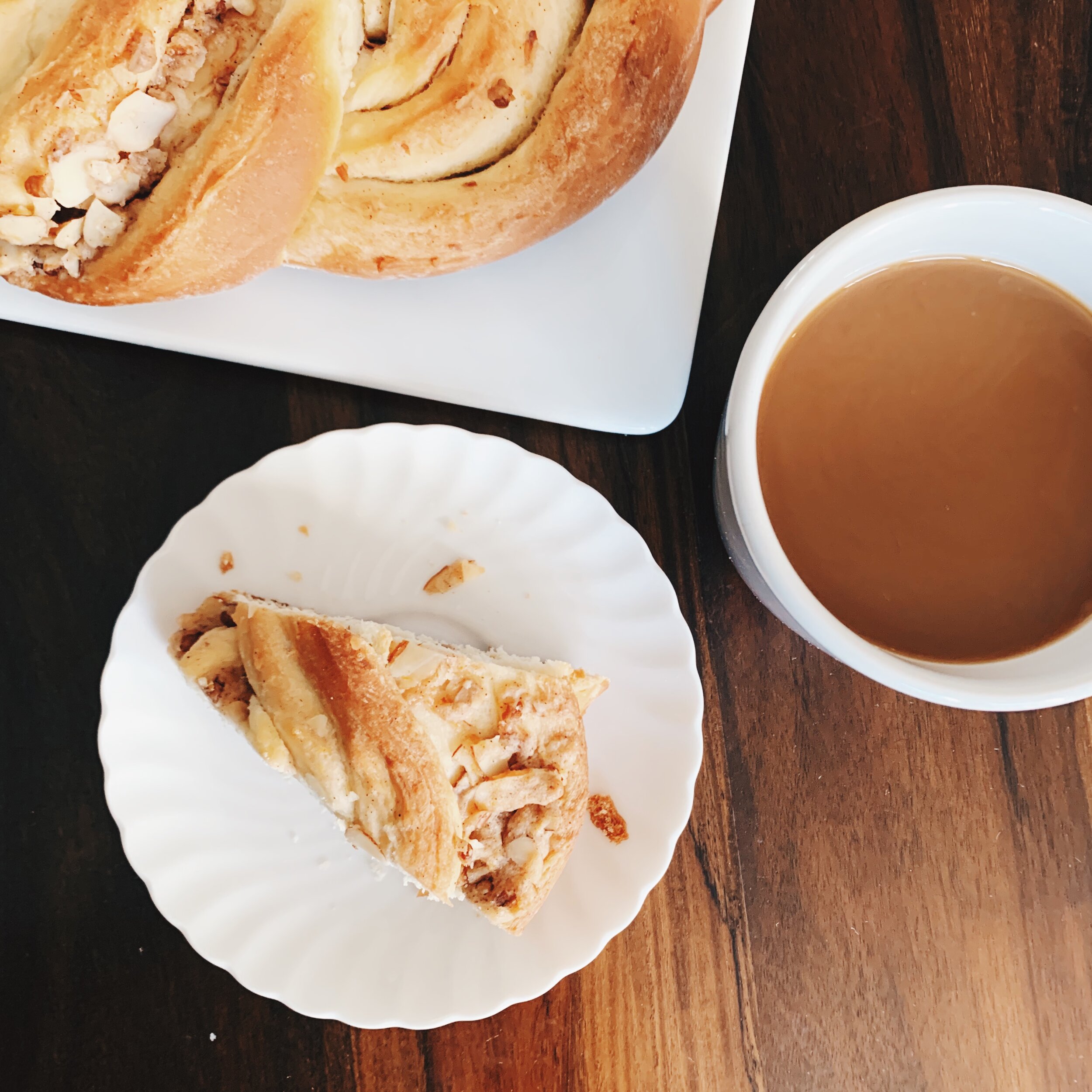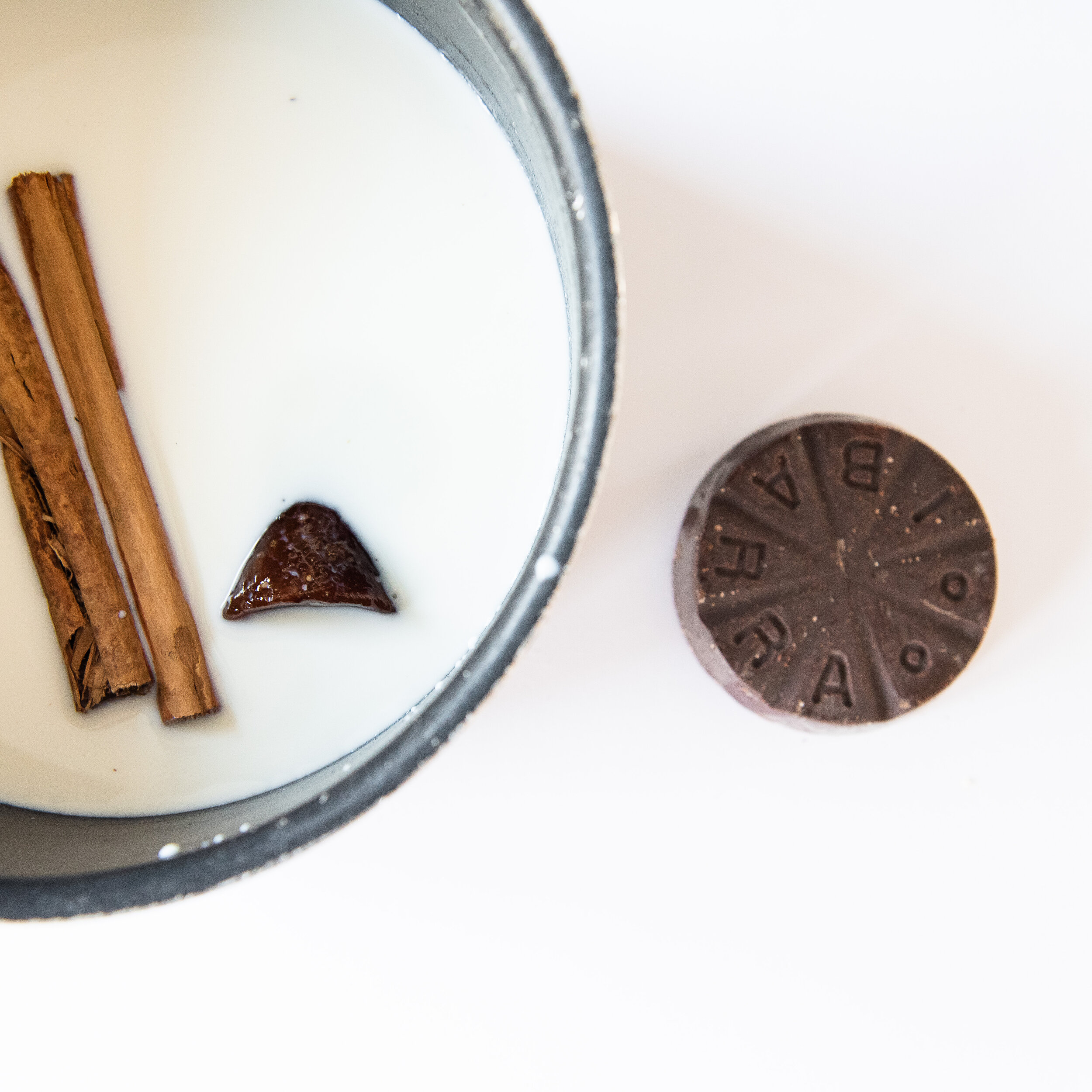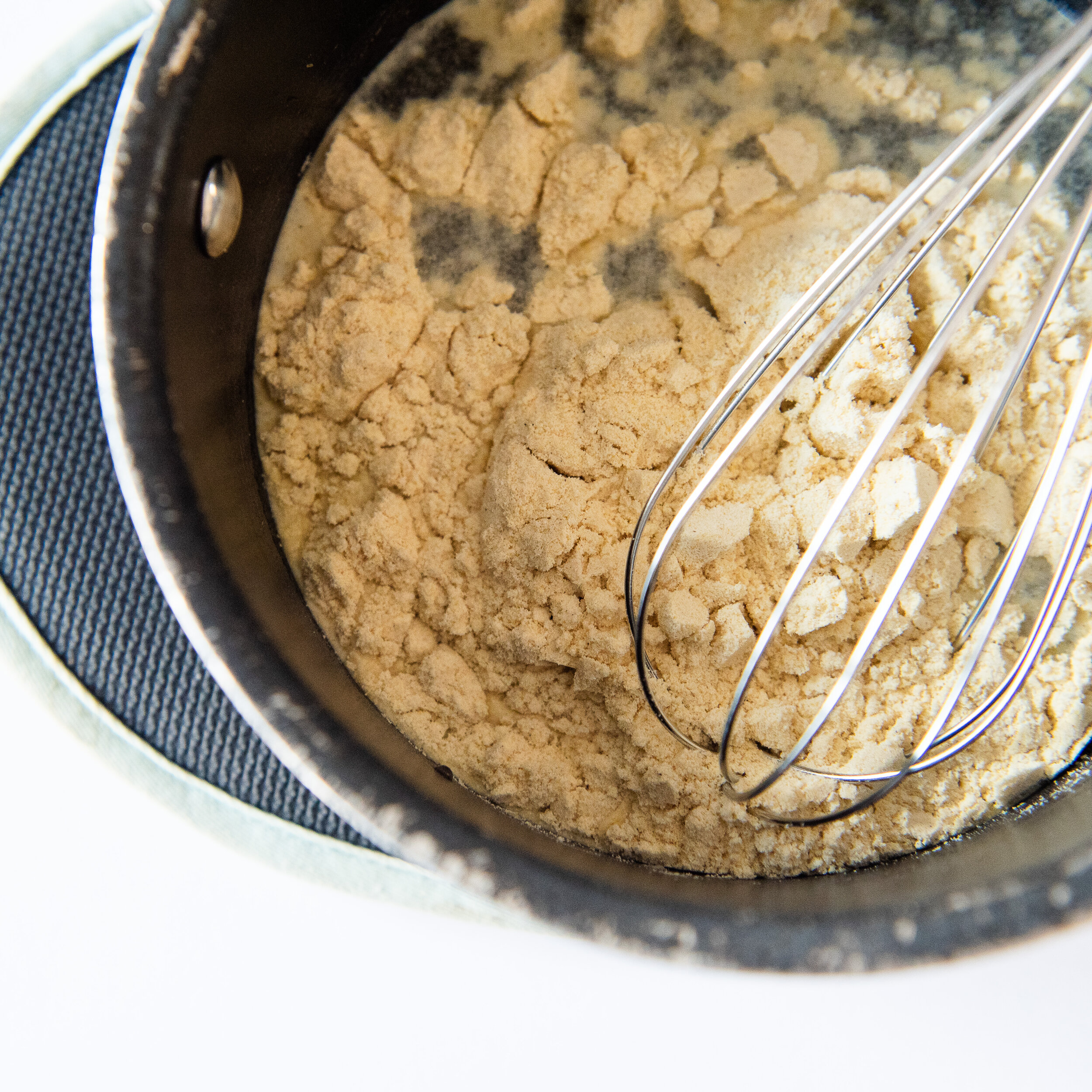No, these aren’t the Taco Bell Chalupas. Although I must admit I have had a taco bell chalupa once or twice. It was college…yes, you can judge. Haha.
I had chalupas like this in Puebla when I went for the first time with my father last year. He had just enjoyed a meal at a nice restaurant, but I wanted to hold out for some street food. After he ate, we walked around the city in search of some elote when I saw a lady making these chalupas. At the time I didn’t know what it was, but it smelled amazing. She had a huge comal with chalupas and was selling them five at a time. They were amazing! I’ve been thinking about them ever since and I really wanted Michael to taste them, so I finally made them. They were so good, and I wanted to share the recipe with you. I’m also sharing my recipe for salsa verde (below), since I shared how I make salsa roja last year.
Gather Ingredients
Corn tortillas
Lard
Chopped onion
Shredded chicken
Green Salsa (recipe below)
Queso Fresco
Now what?
1. Heat your pan with a generous amount of Lard (about 3 teaspoons for a small pan).
2. Add tortillas to crisp. Flip tortilla after about 60 seconds.
3. Add a handful of chicken, onion, and two scoops of salsa or until covered.
4. Let cook for another minute or two. It will sizzle a lot so be careful of the Lard jumping. You have to be brave and let the grease hit your hand a little as you add the salsa.
5. Take out of the pan and transfer to your plate and top with queso fresco.
6. Enjoy!
I was so happy they turned out! They cook really quickly so make sure you have all your ingredients ready to go. And I used Lard to make these, but I’m sure you can also use vegetable oil.
Salsa Verde
Gather Ingredients
Green Tomatoes (2 lbs)
1 onion
3 cloves of garlic
About 1/2 cup of chopped cilantro
Salt to taste
2 serrano peppers
Now what?
1. Peel and wash tomatoes. Peel onion and garlic.
2. Put tomatoes, onion, and garlic in a pan with medium heat.
3. Let it all brown. Turning every few minutes to make sure it browns until skin of tomato starts peeling. This part is about 30 minutes.
4. Put tomatoes, onion, and garlic in a blender. Add about 6 oz of water.
5. Blend.
6. Add cilantro & salt to taste. Add the 2 serrano peppers, more if you want to add heat.
7. Blend until ingredients are all incorporated.
8. Enjoy!
This is a nice fresh salsa great for the summer months. I usually alternate between making green and red salsa at home. If you make either of these recipes at home, I’d love to know! Leave a comment below, or share a picture of your meal with me on Instagram!
SIGN UP
Join the mailing list to be the first to know when there's a new collection launch, exclusive promotions, blog posts, and to get a behind-the-scenes look as Karina travels to capture work for new print offerings.

